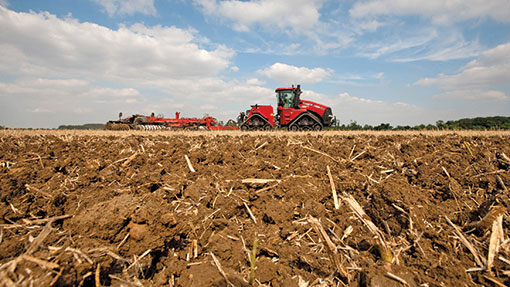Fallow makes return as ‘third crop’

Challenging times lie ahead on contracted farms as final changes are made to cropping plans following Defra’s latest details on CAP reform implementation.
Cereal prices are at a four year low, and recent announcements on the Basic Payment Scheme (BPS) – including what will and will not count towards greening measures – mean there will be a significant change of crops in the ground. More Defra details are expected next month.
Some contractors have expressed concern that the cereal prices will substantially decrease the divisible surplus while, as farm business consultants, we are considering the “heresy” of fallow on the less productive land.
 Jon Birchall
Jon BirchallBusiness consultant, Balfour LLP
Certainly the projected net margins for winter barley and winter oilseed rape are barely breakeven, and the recent enthusiasm for spring beans as part of our Ecological Focus Areas (EFA), now looks slightly misplaced.
It is easy to forget beans can be an unreliable crop and conversations with contractors indicate that there’s likely to be a glut of beans on the market next year. In my opinion, fallow as a “crop” has received a large boost as Defra published its latest guidelines on CAP reform last month.
Under the new BPS fallow can now count as a crop under the crop diversification rules, and also count towards the EFA requirements, albeit with different rules applying in each case.
See also: Video: Truss to press EU for three-crop rule review
Many of the existing options already in place, under current agri-environment schemes, could satisfy the rules for fallow under the BPS, and in 90% of the cases, this will be without penalty to the ELS payments.
Where there isn’t an existing agri-environment scheme in place, low combinable crop profitability means putting land with poor productivity into fallow, is a sensible option, especially in a contract farming situation, where it is effectively, much easier to reduce fixed costs.
Under the crop diversification rules, the crop in the ground during the period 1 May to 30 June is the one which counts when the BPS application is submitted.
But it is important to note that when fallow is used as part of the EFA requirement this period extends from 1 January to 30 June and no crop may be established on fallow during this period unless it is a wild bird seed mix or a pollen and nectar mix.
Both of these mixes can satisfy the fairly loose requirements for fallow, hence the need to look carefully at existing agri-environment schemes when considering greening requirements, as these options are frequently found on farms.
Temporary grass can also count as fallow, as long as no production (grazing, or cropping), is taken during the fallow period. While land is entered on to the BPS application as fallow, it will not lose its arable status.
There are few management requirements for fallow land. Defra simply state that no agricultural production can take place during the fallow period and fallow areas must be a minimum of 0.01ha and have a minimum width of 2m. Where problems exist with herbicide resistant grassweeds, the flexibility of fallow means it could be an ideal management tool to deal with problem weed areas.
Farmers and businesses, with ELS schemes which commenced on or after the 1 January 2012, will shortly receive letters from Natural England explaining how their payments will be reduced under the double funding rules.
Agreement holders will be given until 15 November to amend, rescind, or continue with their schemes. It’s vitally important to try and restructure and retain these schemes as there is no replacement for ELS under the New Environmental Land Management Schemes.
Other options which can be used as part of the 5% EFA requirement are: buffer strips, nitrogen fixing crops, hedges, and catch and cover crops. In order to qualify all of these options need to be located on or adjacent to arable land.
Buffer strips only qualify if they are adjacent to a water course but bizarrely, the one metre cross-compliance strip can also count as the buffer strip and because of the multipliers used in the BPS rules, this will be worth nine square metres of EFA.
So far it looks as if we will be able to incorporate the requirements of the BPS, into most of our contract farming systems, without too much difficulty. The one area where we will see serious problems, is with the smaller arable acreages which are currently block cropped.
Implementing the three crops rule on these areas will significantly increase costs as efficiencies from block cropping are lost, which seems ironic when DEFRA publicly states it wishes to grow the rural economy and increase farm productivity.

